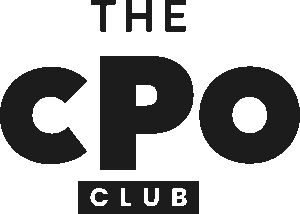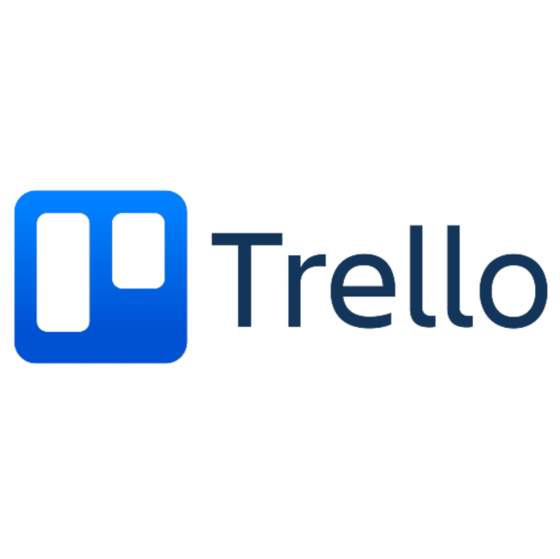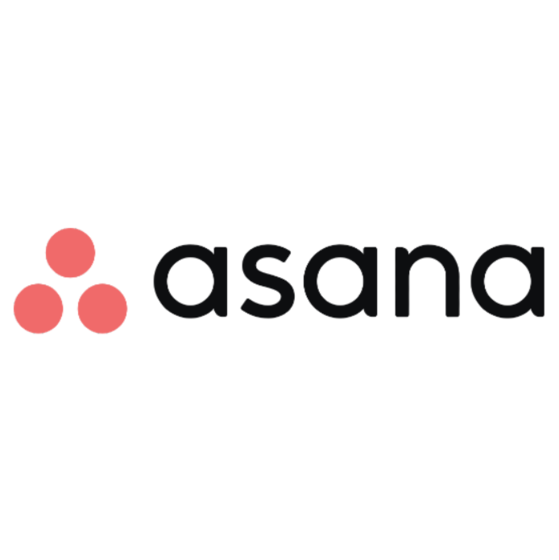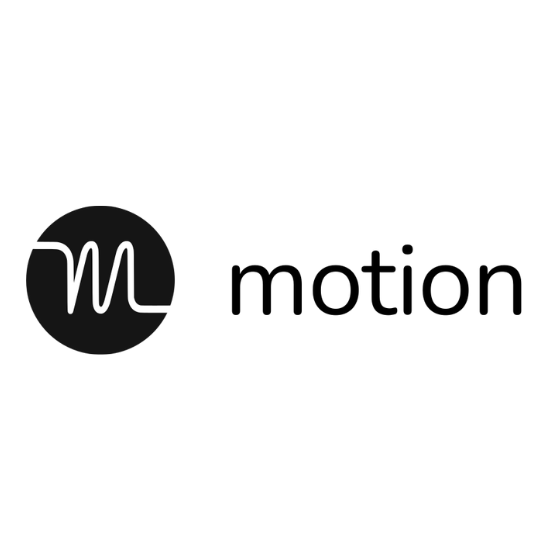10 Best Wrike Alternatives Shortlist
Here’s my shortlist of the best Wrike alternatives:
As a product manager, you face many challenges—tight deadlines, team coordination, and resource allocation. The right project management solution can help, but sometimes the tool you’re using doesn’t fit your needs. If you’re finding Wrike isn’t cutting it, you’re not alone.
In my experience, finding the right software can transform how your team works. I’ve independently tested and reviewed several Wrike alternatives to help you find a tool that better suits your business challenges.
In this article, I’ll share my top picks, diving into each option's features, pros, and cons. My goal is to guide you to a solution that enhances your team’s productivity and fits your unique requirements.
What Is Wrike?
Wrike is a project management software that helps teams organize tasks, projects, and collaboration. It's often used by project managers, marketers, and IT professionals who need to manage complex workflows. Task tracking, Gantt charts, and real-time collaboration features help with improving team efficiency and project visibility. Overall, Wrike offers a centralized platform to boost your team's productivity and coordination.
Best Wrike Alternatives Summary
This comparison chart summarizes pricing details for my top Wrike alternative selections to help you find the best one for your budget and business needs
| Tool | Best For | Trial Info | Price | ||
|---|---|---|---|---|---|
| 1 | Best for visual task management | Free plan available | From $5/user/month (billed annually) | Website | |
| 2 | Best for structured task workflows and cross-team project visibility | 30-day free trial | From $10.99/user/month (billed annually) + free plan available | Website | |
| 3 | Best for time tracking and budget control in creative agencies | Free plan available | From $10/user/month (billed annually) | Website | |
| 4 | Best for long-term capacity planning and resource forecasting | Free demo available | From $9/user/month (billed annually) | Website | |
| 5 | Best for creating project timelines | Free plan available | From $21/year (billed annually) | Website | |
| 6 | Best for managing multiple projects | 14-day free trial | From $29/user/month (billed annually, min 5 seats) | Website | |
| 7 | Best for client project visibility | 14-day free trial | From $10/user/month (billed annually) | Website | |
| 8 | Best for AI-powered productivity tools | 7-day free trial | From $19/user/month (billed annually) | Website | |
| 9 | Best all-in-one project, billing, and resource planning | Free demo available | From $39/user/month | Website | |
| 10 | Best for project management and collaboration | Free trial available | From $7user//month (billed annually) | Website |
Why Trust Our Software Reviews
We’ve been testing and reviewing product management software since 2020. As product managers ourselves, we know how critical and difficult it is to make the right decision when selecting software. We invest in deep research to help our audience make better software purchasing decisions.
We’ve tested more than 2,000 tools for different product management use cases and written over 1,000 comprehensive software reviews. Learn how we stay transparent and check out our software review methodology.
Best Wrike Alternatives Reviews
Below are my detailed summaries of the best Wrike alternatives that made it onto my shortlist. My reviews offer a detailed look at the key features, pros & cons, integrations, and ideal use cases of each tool to help you find the best one for you.
Trello is a visual project management tool that uses boards, lists, and cards to help teams organize tasks and projects. It's popular among teams of all sizes for task management, collaboration, and workflow visualization.
Why it's a good Wrike alternative: Trello excels in visual task management with its intuitive board system that helps you and your team track progress at a glance. The drag-and-drop functionality makes organizing tasks simple and efficient. Trello's flexibility allows customization of boards to fit different project needs. Its focus on visual organization and ease of use makes it a compelling choice for teams needing straightforward task management.
Standout features & integrations:
Features include custom card and board views that let your team personalize their workflow. Trello's automation features reduce repetitive tasks, saving your team time. The calendar view helps your team track deadlines and plan ahead.
Integrations include Slack, Google Drive, Dropbox, Microsoft Teams, Jira, GitHub, Evernote, Salesforce, Asana, and Zapier.
Pros and cons
Pros:
- Effective visual task tracking
- Highly customizable boards
- Intuitive drag-and-drop interface
Cons:
- Limited task dependencies
- May lack depth for complex projects
Asana
Best for structured task workflows and cross-team project visibility
Asana is a project management tool designed to help teams organize, track, and manage their work. It's widely used by teams across different industries for task management, project planning, and team collaboration.
Why it's a good Wrike alternative: Asana excels in team collaboration and task management with features like task assignments, due dates, and project timelines. These tools help your team stay organized and meet deadlines efficiently. Asana's intuitive interface makes it easy to adapt and use, enhancing team productivity. Its focus on collaboration and ease of use sets it apart as a Wrike alternative.
Standout features & integrations:
Features include customizable task views that let you organize work in a way that suits your team. The timeline feature helps you visualize project schedules and monitor progress. Asana also offers goal tracking to keep your team aligned with project objectives.
Integrations include Slack, Microsoft Teams, Google Drive, Dropbox, Zoom, Salesforce, Trello, Jira, GitHub, and Zapier.
Pros and cons
Pros:
- Customizable project views
- Intuitive user interface
- Easy task assignment and tracking
Cons:
- Not ideal for complex projects
- Limited advanced reporting features
Best for time tracking and budget control in creative agencies
FunctionFox is a project management tool tailored for creative teams and agencies, focusing on time tracking, project management, and budgeting. Its main users are creative professionals who need to manage projects, track billable hours, and stay on budget.
Why it's a good Wrike alternative: FunctionFox offers specialized tools for creative agency management with features like detailed time tracking, project scheduling, and budget tracking. These capabilities help your team manage multiple projects while keeping an eye on financials. The tool's intuitive interface simplifies project setup and tracking. FunctionFox's focus on creative workflows makes it ideal for agencies needing a tailored solution for managing creative projects.
Standout features & integrations:
Features include project scheduling, which helps your team keep track of deadlines. The detailed time tracking feature lets you monitor billable hours efficiently. Budget tracking ensures that you stay on top of project costs and financials.
Integrations include QuickBooks, Microsoft Outlook, Google Calendar, Slack, Dropbox, Xero, Salesforce, Asana, Trello, and Zapier.
Pros and cons
Pros:
- Effective budget tracking
- Easy project scheduling
- Tailored for creative workflows
Cons:
- Less suitable for non-creative industries
- Not ideal for large teams
Birdview
Best for long-term capacity planning and resource forecasting
Birdview is a project management and professional services automation platform designed for internal teams and professional services companies across various sectors like engineering, business consulting, and IT services. Its key business functions include resource planning, project management, billing, and collaboration, aimed at improving project delivery and resource utilization.
Why it's a good Wrike alternative: Birdview excels in advanced resource planning with features like AI-driven project management, customizable dashboards, and detailed resource allocation tools. These capabilities allow your team to optimize resource utilization and project timelines. With over 300 pre-configured dashboards, you can analyze data effectively. Birdview also offers tailored onboarding and support services, ensuring smooth implementation for your team.
Standout features & integrations:
Features include customizable workflows that let you tailor the platform to your team's needs. The platform provides business intelligence tools for in-depth data analysis. Customizable dashboards allow you to monitor operations and financial health efficiently.
Integrations include Salesforce, QuickBooks, Slack, Microsoft Teams, Trello, Asana, Dropbox, Google Workspace, Jira, and HubSpot.
Pros and cons
Pros:
- AI-driven project management
- Customizable dashboards
- Advanced resource planning tools
Cons:
- Higher learning curve for new users
- Complex features for small teams
Office Timeline is a timeline and Gantt chart maker designed for professionals who need to create visual project plans and schedules. Its main users include project managers and team leads who require clear, visually appealing timelines for presentations and reports.
Why it's a good Wrike alternative: Office Timeline specializes in creating project timelines with easy-to-use templates and drag-and-drop functionality. It offers a variety of visual styles to tailor your timelines to your needs. The tool allows you to create Gantt charts that are simple to update and share with your team. With its focus on visual project planning, Office Timeline helps you communicate project timelines effectively.
Standout features & integrations:
Features include a wide range of customizable templates that let you start quickly. The drag-and-drop interface simplifies timeline creation and updates. You can export timelines to PowerPoint, making it easy to include them in presentations.
Integrations include Microsoft PowerPoint, Excel, Project, Smartsheet, Wrike, monday.com, Trello, Asana, Google Sheets, and Jira.
Pros and cons
Pros:
- Exports directly to PowerPoint
- Intuitive drag-and-drop interface
- Easy timeline customization
Cons:
- Requires PowerPoint for full functionality
- Not suitable for large projects
Ravetree is a project management software designed to cater to the needs of teams seeking to organize their projects and resources effectively. It offers a suite of features that help with project workflows, from planning to execution.
Why it's a good Wrike alternative:
I picked Ravetree as a good Wrike alternative because of its robust project management capabilities. It offers tools for managing projects, creating templates, and customizing approval workflows, which are essential for teams that need to keep track of multiple projects simultaneously. These features help your team stay organized and ensure that project tasks are completed on time. Another reason is its resource management feature, which provides insights into team capacity and financial tracking. This allows you to allocate resources efficiently and manage your team's workload effectively, ensuring that projects are delivered within budget.
Standout features & integrations:
Features include detailed time and expense tracking, which enables you to keep a close eye on project costs and ensure accurate billing. The integrated CRM feature provides account managers and sales representatives with real-time access to client information, helping them manage customer relationships more effectively. Additionally, client portals offer real-time project updates, allowing clients to stay informed about the progress of their projects and facilitating better communication between your team and clients.
Integrations include Todoist, Microsoft Excel, Trello, Resource Guru, Monday.com, Favro, Asana, Microsoft Teams, Google Drive, Slack, Dropbox, and Jira.
Pros and cons
Pros:
- Provides a holistic view of all projects and their statuses
- Supports Scrum and Kanban, catering to Agile teams
- Facilitates smoother communication and transparency with clients
Cons:
- The robust interface can feel cluttered due to numerous functionalities
- Offers less flexibility in interface and workflow customization compared to competitors
Teamwork is a project management software designed to help teams increase collaboration, accountability, and project success. It's widely used by project managers and teams who need to track tasks, manage projects, and ensure timely delivery.
Why it's a good Wrike alternative: Teamwork offers client project visibility with features like task assignments, milestone tracking, and time tracking. These tools help your team manage deadlines and monitor project progress effectively. Built-in chat and message boards facilitate team communication, keeping everyone on the same page. The Gantt charts and Kanban boards offer visual project planning, making it easier to manage complex workflows.
Standout features & integrations:
Features include customizable views like Gantt charts and Kanban boards, which let you visualize tasks and workflows. Time tracking helps you monitor how your team spends their time on projects. Built-in chat and message boards enhance team communication, allowing for easy discussions and updates.
Integrations include Slack, Google Drive, Dropbox, HubSpot, QuickBooks, Xero, Zapier, Microsoft Teams, Trello, and Asana.
Pros and cons
Pros:
- Customizable project views
- Strong client and team collaboration tools
- Easy project setup with Gantt charts
Cons:
- No task-to-milestone conversion
- Limited milestone management
Motion is a productivity and task management tool designed for individuals and teams looking to optimize their daily schedules and task management. Its main users include professionals and teams who need help with task prioritization, scheduling, and productivity.
Why it's a good Wrike alternative: Motion offers AI-powered productivity tools that help your team prioritize tasks and manage schedules effectively. The smart calendar feature automatically adjusts your schedule based on task urgency and availability. With task automation, you can reduce the time spent on manual scheduling. Motion's focus on AI-driven productivity makes it ideal for teams needing to enhance their workflow efficiency.
Standout features & integrations:
Features include a smart calendar that adapts to your changing priorities. Task automation reduces manual input, freeing up your time for more important work. Motion also offers focus time management, helping you dedicate uninterrupted time to critical tasks.
Integrations include Google Calendar, Outlook, Trello, Asana, Slack, Zoom, Microsoft Teams, Todoist, Notion, and Jira.
Pros and cons
Pros:
- Focus time management
- Smart calendar adjustments
- AI-powered task prioritization
Cons:
- May not fit all team structures
- Not suited for large projects
Workamajig is a web-based project management platform used by creative and marketing teams to manage tasks, schedules, budgets, and invoicing. It helps you and your team handle project intake, resource planning, time tracking, and financial oversight all in one place.
Why it is a good Wrike alternative: You get templates for project intake and automated estimating tied to budgets and billing, helping you track costs and profitability. The kanban-style board and today feed let your team stay on top of tasks and updates. Resource scheduling shows who’s available or overbooked so you can balance workloads. Built-in digital proofing lets you share files and gather client feedback without separate tools.
Standout features & integrations:
Features include customizable project templates with budgets and timelines, built-in digital proofing and review tools, and real-time time logging right from task cards.
Integrations include Google Calendar, Microsoft Outlook, Plaid, Strata, Mediaocean, PayFlowPro, and AvidXchange.
Pros and cons
Pros:
- Templates for common workflows
- Detailed budgeting and cost-tracking
- Handles project intake to invoicing
Cons:
- Onboarding can take significant time
- May be overly heavy for non-creative teams
Nifty is a popular project management software that enhances productivity with features like task management, real-time collaboration, and automated reporting. Its main users include teams from various industries such as marketing, engineering, and legal, focusing on project planning, communication, and task management.
Why it's a good Wrike alternative: Nifty offers a user-friendly interface that simplifies project management with features like creative collaboration tools and workflow automation. The platform supports cross-functional alignment, making it ideal for teams needing to streamline operations. Its task management and reporting capabilities enhance operational efficiency. Nifty's focus on integration and ease of use makes it a strong alternative for teams looking to improve collaboration.
Standout features & integrations:
Features include task management that allows you to organize and prioritize your work efficiently. Real-time collaboration tools help your team stay connected and aligned. Automated reporting provides insights into project progress and team performance.
Integrations include Google Workspace, Slack, Zoom, Microsoft Teams, Trello, Asana, Jira, Dropbox, GitHub, and Zapier.
Pros and cons
Pros:
- Automated reporting features
- Supports cross-functional teams
- Effective task management
Cons:
- Some users find customization limited
- Not ideal for very large projects
Other Wrike Alternatives
Here are some additional Wrike alternatives that didn’t make it onto my shortlist, but are still worth checking out:
- Scoro
For end-to-end business management
- Accelo
For professional services automation
- Hubstaff
For automatic time tracking with productivity monitoring
- monday.com
For building custom team dashboards and automations
- Quire
For hierarchical task planning with a visual UI
- Hive
For team-based productivity insights
- Celoxis
For Gantt-based project and resource planning
- Kantata
For resource planning and project accounting
- Zoho Projects
For budget tracking
- Smartsheet
For spreadsheet-based project tracking
- Basecamp
For centralized communication and lightweight task tracking for small teams
- Tempo Portfolio Manager
For portfolio management
- ClickUp
For customizable workspaces
- MeisterTask
For visual task workflows with mind map integration
- Hub Planner by Milient
For day-to-day resource scheduling and utilization tracking
- Parallax
For resource forecasting
- Pneumatic Workflow
For automating repetitive tasks
Wrike Alternatives Selection Criteria
When selecting the best Wrike alternatives to include in this list, I considered common buyer needs and pain points related to project management software products, like integration capabilities and customization options. I also used the following framework to keep my evaluation structured and fair:
Core Functionality (25% of total score)
To be considered for inclusion in this list, each solution had to fulfill these common use cases:
- Task and work management
- Project management features
- Project roadmap features
- Project scheduling
- Time tracking
- Collaboration tools
- Reporting and analytics
Additional Standout Features (25% of total score)
To help further narrow down the competition, I also looked for unique features, such as:
- AI-driven insights
- Customizable dashboards
- Resource allocation tools
- Automated workflows
- Advanced security options
Usability (10% of total score)
To get a sense of the usability of each system, I considered the following:
- Intuitive interface
- Ease of navigation
- Customization options
- Learning curve
- Mobile accessibility
Onboarding (10% of total score)
To evaluate the onboarding experience for each platform, I considered the following:
- Availability of training videos
- Interactive product tours
- Access to templates
- Supportive chatbots
- Webinars and workshops
Customer Support (10% of total score)
To assess each software provider’s customer support services, I considered the following:
- Availability of live chat
- Email support responsiveness
- Access to a knowledge base
- Phone support options
- Community forums
Value For Money (10% of total score)
To evaluate the value for money of each platform, I considered the following:
- Pricing transparency
- Feature-to-price ratio
- Availability of free trials
- Tiered pricing options
- Discounts for annual billing
- Number of seats for team members
Customer Reviews (10% of total score)
To get a sense of overall customer satisfaction, I considered the following when reading customer reviews:
- User satisfaction ratings
- Feedback on feature performance
- Comments on customer service
- Ease of use feedback
- Value for money feedback
Why Look For A Wrike Alternative?
While Wrike is a good choice of project management software, there are a number of reasons why some users seek out alternative solutions. You might be looking for a Wrike alternative because…
- You need more customization options
- Your team finds Wrike too complex
- You're looking for better integration capabilities
- Your budget doesn't fit Wrike's pricing
- You require specific industry features
- Your team needs a simpler user interface
If any of these sound like you, you’ve come to the right place. My list contains several project management software options that are better suited for teams facing these challenges with Wrike and looking for alternative solutions.
Wrike Key Features
Here are some of the key features of Wrike, to help you contrast and compare what alternative solutions offer:
- Task management: Create and organize tasks and subtasks easily for better workflow.
- Collaboration tools: Connect with teammates using @mentions and feedback loops for approvals.
- Time tracking: Log time spent on tasks with built-in timers and descriptions.
- Resource management: Monitor team allocations and adjust tasks with drag-and-drop.
- Document management: Handle attachments with proofing and version control for client approvals.
- Custom dashboards: Build boards to access filtered information for task monitoring.
- Workload view: Visualize hours and allocation percentages to optimize team workloads.
- Comparison mode: Compare file versions side by side to spot differences easily.
- Request forms: Create custom forms to gather information from external users.
- Reporting and analytics: Generate detailed reports to gain insights into project performance.
What's Next?
Don't forget to subscribe to our newsletter for more product management resources and guides, plus the latest podcasts, interviews, and other insights from industry leaders and experts.






















